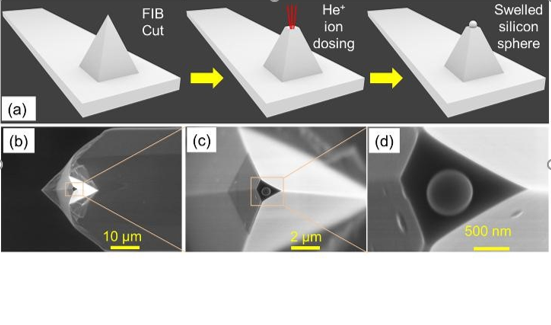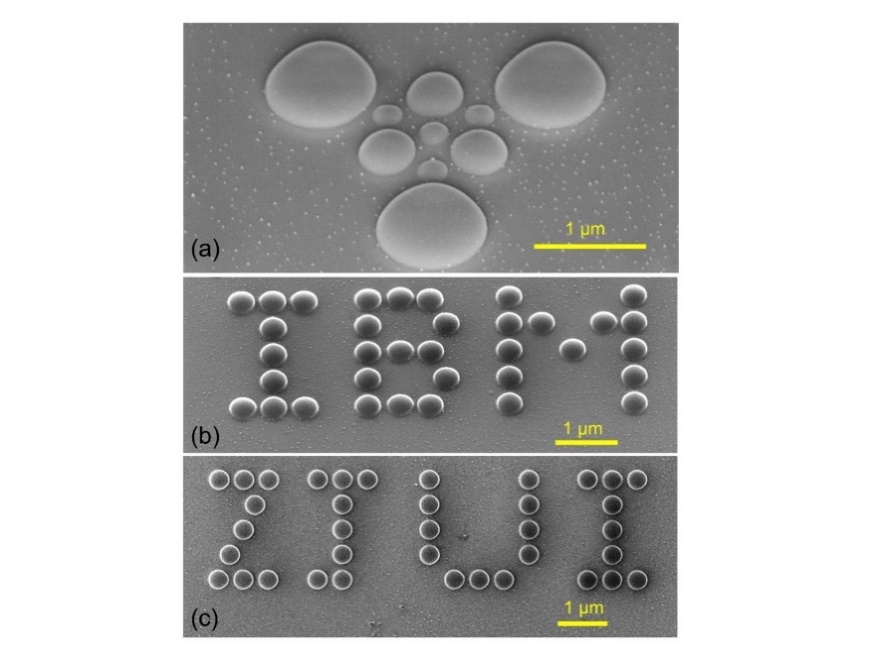A novel spherical probe for the nanoscale world
Antennae are typically sensory organs in insects. They respond accordingly by sensing external stimuli. In the physical world, the atomic force microscope is a must for researchers to probe into the “force” of the object while in contact. The core component is its probe which functions as the “antenna” of an insect.
However, the spherical atomic force microscopic (AFM) or colloidal AFM tip has a “blind spot” regarding nanoscale measurements. Recently, the research team led by Dr. HU Huan from the ZJU-UIUC Institute developed a sub-micron spherical AFM tip. Their research findings are published in the Langmuir.
An AFM consists of a cantilever with a sharp tip (probe) at its end. It generates images by scanning a small cantilever over the surface of a sample. The sharp tip on the end of the cantilever contacts the surface, bending the cantilever and changing the amount of laser light reflected into the photodiode. The height of the cantilever is then adjusted to restore the response signal resulting in the measured cantilever height tracing the surface. The AFM, which has three major abilities: force measurement, topographic imaging, and manipulation, thus opens the door to researchers to probe into the nanoscale physical world.
The spherical AFM tip is one of the members in the family of AFM tips. It is superior to others in many aspects. For example, it can prevent rupture of either the cell membrane in biological studies, or a thin suspended membrane during a mechanical test.
Nonetheless, the spherical AFM tip on a traditional microscope is far from ideal for lack of precise placement, good control over the spherical shape, and strong adhesion between the sphere and cantilevers. Against this backdrop, HU Huan et al. developed a novel approach to fabricating sub-micron spheres precisely on top of microcantilevers for nanoscale friction measurements using high-energy helium ions. Sub-micron spheres of diameters from 100 nm to 1 μm were readily fabricated by adjusting helium ion dosing areas and amounts. Both the shape and the position of the sub-micron sphere were successfully configured in unprecedented precision compared with previous fabrication methods of spherical probes. Experiments showed that the sub-micron spherical AFM tip can provide robust measurements up to 10 000 cycles without failure. Moreover, the nanoscale feature of this tip can provide accurate imaging and offer adhesion force mapping with nanometer precision.

HU Huan et al. made a breakthrough in reducing the size of spherical AFM tips from the micrometer scale to the sub-micron scale. This newly-fabricated AFM tip thus has promising applications in nanotribology, AFM-based force spectroscopy, colloidal force studies, and tip-enhanced Raman scattering.

Dr. Tao Jinhui from the Pacific Northwest National Laboratory of the United States commented: “Using the spherical swelling of silicon materials under the dosing of high-energy helium ion beams, Dr. Hu’s research group pioneered the processing of spherical atomic force microscope probes.”
Dr. Wei Dongguang, the Chief Scientist of Zeiss Microscopy’s ion research and development center, believes that “this research has greatly expanded the range of probe tip materials at a very low cost, thus expanding the detection and characterization capabilities of scanning probe technology."